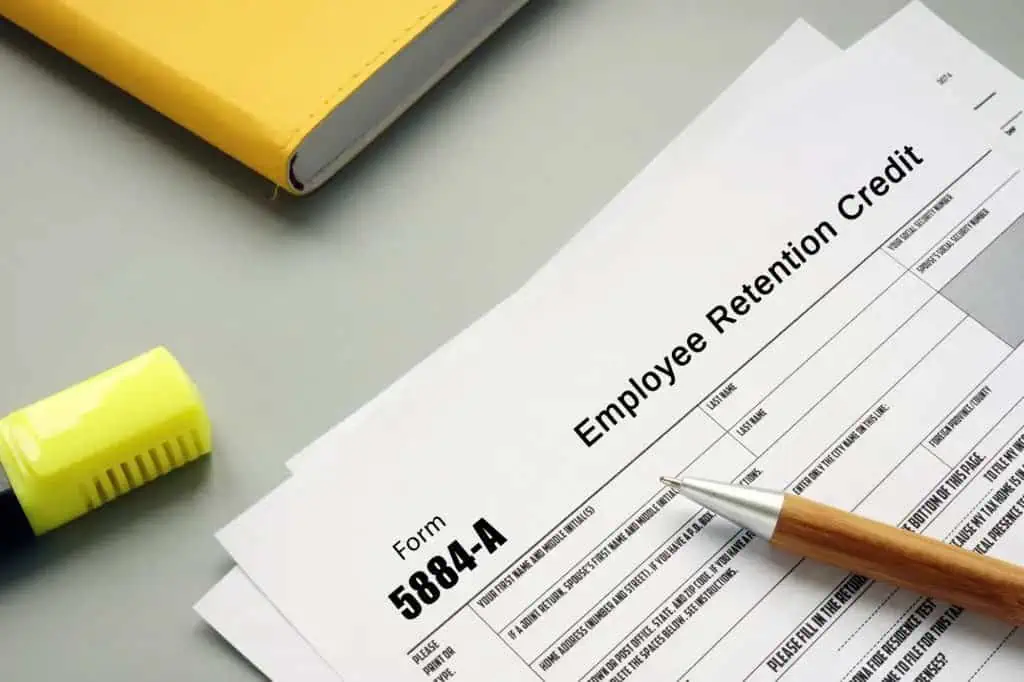Introduction
Businesses often struggle to keep up with government regulations and rule changes. Companies face new obstacles each year to navigating new policy or law changes. Failure to adhere to updated regulations puts businesses in a tough spot and triggers penalties and interest.
Additionally, it also propels market leaders to doubt your business potential. You’d be surprised how many businesses fail to meet all the ERTC requirements. And the next thing these businesses realize is that they pushed away the opportunity that would’ve helped them recoup employee retention costs.
So, it makes all the more reason for eligible enterprises to consider all the tax filing and prerequisite requirements before claiming employee retention tax credit. Startups often second guest loans and tax credits. However, the confusion usually comes down to the stated requirements.
Here is a breakdown of how you can file employee retention tax credit for 2023, 2022, 2021, and 2020:
Understand the Employee Retention Tax Credit Deadline

So, what years can you claim the employee retention tax credit from? Well, you can claim ERTC from 2020 until 2024. However, the leading hook of this tax credit plan is to meet the policy requirements. And when can you file an employee retention tax credit? The initial deadline to claim the employee retention tax credit was January 1, 2022. Fortunately, this deadline has been extended.
But consequently, it changed some eligibility requirements for small and medium-sized businesses. Remember, many companies are not eligible to tap into this tax credit program and often become victims of fraud and scams. So, first and foremost, reach out to a tax professional and find out whether or not you’re eligible to claim an employee retention tax credit in 2022.
The 2023 deadline to claim the employee retention tax credit is March 12, 2023. Businesses have three full years, enough time to review, understand, and apply this tax credit program adequately. The standard requirement of the program remains the same. It requires businesses to pay full-time employees wages from March 12, 2020, to October 1, 2021. If you check out this box, assume you can file a claim for the employee retention tax credit.
Follow the details of the Infrastructure Investment & Jobs Act to understand exceptions for paid salaries and how it can help startup businesses follow the path of recovery. From the perspective of businesses, the initial deadline is still intact. However, the ERTC program has a timeframe of four years and will allow businesses to claim the tax credits until 2024.
Eligibility Requirements to Claim Employee Retention Credit in 2020-23

Before applying and claiming an ERC, determine whether or not your business is eligible.
Here are the fundamental eligibility requirements for employers across the U.S:
- If businesses face an 80% to 50% to 30% reduction in 2020, 2021, or 2022 gross receipts. You can get an expert accountant to perform the gross receipts test on your behalf and determine whether or not you’re eligible to claim ERC. You can calculate decreased gross receipts by comparing the values to 2019. For the first year, the gross receipts must be down by at least 80% compared to 2019. You can use the same approach to calculate the percentage of decline in your business’s gross receipts for 2021-22 tax returns.
- If a business faces partial or complete closure due to COVID-19 pandemic lockdowns.
- Employers can qualify if they cannot travel for work due to federal government restrictions during 2020 or 2021.
- One of the eligibility requirements for businesses is to determine if their vendors or supply chain partners were affected during the pandemic crisis. Eligibility would come into play if their productivity and production standards were significantly slowed.
- Employers could avail of ERTC if there were a significant change in their regular operating hours in 2022 or 2021. In most cases, business operations were affected by a directed government order.
- Businesses can qualify to claim ERTC if they’ve been unable to provide customers with the same line of products or services.
- Eligibility would also kick in if employers could not meet with their clients in person due to COVID-19 imposed restrictions by the federal government.
Employee Retention Tax Credit Eligibility in 2023
While the initial deadline of October 1, 2021, to claim ERTC is long gone, businesses can still apply to get the employee retention tax credit in 2023, assuming they’re eligible. You can use the three-year time window to claim ERTC if you’re an eligible business. This three-year timeframe starts from your initial filing date.
Average Employee Retention Tax Credit in 2023
In 2023, businesses can get ERC refunds like a grant. Employers can recoup more than $26,000 for each employee. Companies can recover $11,000 based on paid salaries, healthcare expenses, and other costs in the eligible period.
How to Get the ERTC in 2022
Since we’ve established that the ERC deadline has been extended for four years, eligible businesses can file a claim to get an employee retention tax credit. Startup businesses often confuse eligibility requirements. Focus on the basics and updated ERTC requirements. You can ask a tax consultant to help you understand the CARES Act and determine the best filing option to claim ERC in 2022.
The process to apply for the ERTC in 2022 is simple—it’s the criteria for determining whether or not a business is eligible to claim this tax credit that creates confusion. So, learn as much as possible about the requirements to claim the employee retention tax credit in 2022.
Government regulations often seem intimidating, especially when dealing with changing deadlines, rules, and requirements. So, as for “how”, businesses can use Form 941-X to file a claim for the ERTC. Retroactively, employers can file an adjusted quarterly federal tax claim or return for a refund using Form 941-X.
Can You Use ERC Services?
Yes, businesses can leverage third-party employee retention credit services to accelerate filing claims and getting ERTC. Employee Retention Credit services can also help businesses avoid potential fraud or scams and make it easier for businesses to file their employee retention tax credit.
Employers can leverage an ERC service to review their eligibility to claim ERTC. You can analyze technical details like the amount you need and elements that might complicate the filing process. The ERC service aims to maximize your chances of filing a claim successfully and resolve primary concerns and eligibility questions.
Claiming ERTC: Is Your Business Too Late?
The original tax plan allowed U.S. businesses to claim employee retention credits for three straight years. It will enable employers to claim their 2020 business expenses until April 2024. Similarly, companies can claim their 2021 expenses until April 2025.
The best approach for businesses is to hire a tax professional to prepare for the 2023 tax season and ensure they successfully file for their tax credit. It is the best way to support your business.
Final Thoughts
Small businesses can use their 2022 tax returns to claim the employee retention tax credit (ERTC). Businesses can get ERTC until 2024 to cover their 2020-21 paid recruitment costs. Claiming an ERC may seem complicated, but companies can get employee retention credit with proper guidance.
In hindsight, ERTC t is a great way to minimize your business’s financial burden in 2023. So, make the most of your time and use the essential information and time window to claim your ERC. In terms of claiming ERC, businesses can get 50% of the credit on paid wages to employees in 2022. However, for 2021-22, entities can claim 70% of the credit on paid salaries to staff.
Understand that businesses cannot get the employee retention tax credit on amounts paid to independent contractors, freelancers, or suppliers. Employers need to ensure that their paid employee retention costs in 2020 and 2021 are targeted to full-time and permanent staff—part of their payroll—to claim tax credits in 2022 and 2023.

